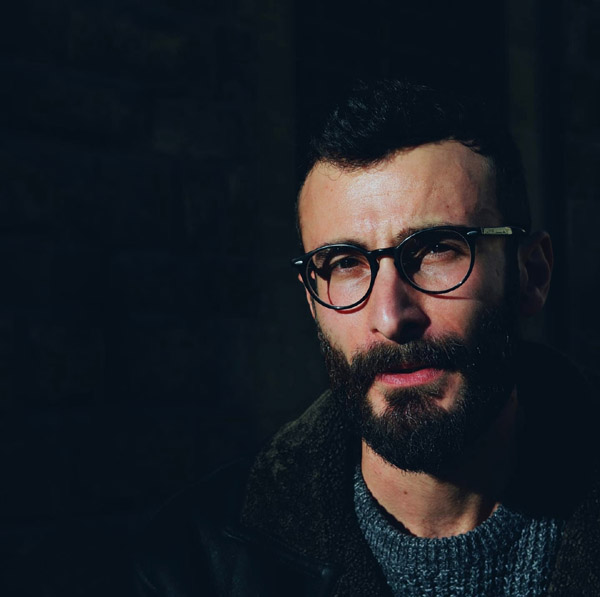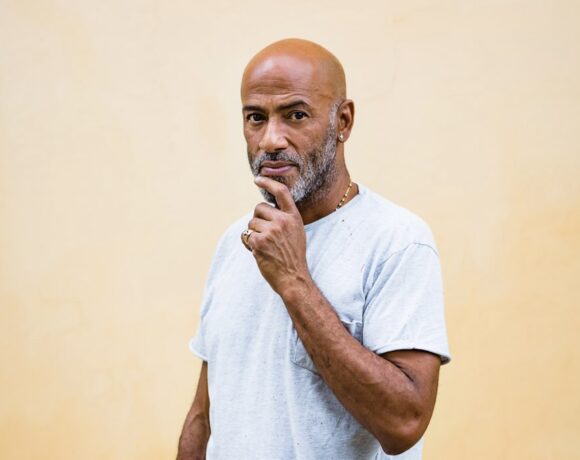There was a time when looking at the sky meant being amazed at everything. The sunrise and sunset, the eclipses, the northern lights were inexplicable and wonderful phenomena, and, therefore, connected to a superior, divine power, in turn identified with the forces of Nature. The Sun, in particular, was fundamental for ancient civilizations, as a source of light and heat, a symbol of fertility, power and royalty. There were innumerable deities associated with it, from Ra for the Egyptians, to Apollo for the Greeks and Romans, to Mārīcī for the Buddhists and to Sūrya for the Hindus.
At that time, if we had asked any human being to try to imagine surviving without the contribution of sunlight – beyond the well-known biological repercussions – the answer would probably have been catastrophic. With the exhibition L’Ascella del Sole, opened last month at GALLLERIAPIÙ in Bologna, Andrea Marco Corvino alias LOL63 tries to outline the scenario that should be renounced if this unfortunate fantasy actually come true.
The question that inspired the artist, however, is posed in a different and, perhaps, even more appropriate way related to the hyper-technological times in which we live. He does not refer to the Sun to underline its importance in a hypothetical dystopian circumstance in which it should fail, but to the electric current, modern transfiguration of light as an energy source, and an invention that more than any other (together with writing) has marked the existence of man, especially with subsequent and more recent applications. This discovery, which is Western and, in many respects, elitist (Africa uses 4% of the world’s electricity, as compared to a population that corresponds to one fifth of the global one ), is also approached by the ‘eventual disappearance of water, an ancestral element, if we consider the fact that it appeared on Earth about 4 billion years ago – among other things thanks to the action of the Sun, according to some researchers of the University of Glasgow – and essential for the needs of any living being (scandalous that, again on the African continent, it is difficult to find uncontaminated water in 2022).
Thus, an artist born and lived in South Africa for the first years of his life, could not fail to look at this immense portion of the world to try to reflect on the importance of Nature and its elements. And in looking at it, in search of a sign of strength and resistance, he could not fail to consider the story of the Bushmen, “a people who made survival a perfect art”. This is why the works on display, including a monumental site-specific painting that covers the walls of the entrance hall, are inspired, in particular, by the Bushman Fairy Tales curated by Anna Meda and published by Mondadori in 1999: a collection of oral compositions that the ancient community of the Kalahari – the desert region in which the Bushmen live, which includes part of Botswana, Namibia and South Africa – has always handed down over the centuries and which, evidently, has remained etched in the artist’s childhood memories.
In the book you can read “stories of animals and hunters, deserts, forests and spirits of nature”, which are elaborated by Corvino through drawing and imagination, and then transferred to the wall, onto jute supports (among these, the reference to The first Bushman stands out, i.e. the first, ideal man who appeared on Earth), on a wool carpet (decorated with flags of the African continent, adinkra symbols and other autobiographical elements), a ceramic vase (mix between artisan tradition and contemporary language of stickers) and a neon installation (also strongly symbolic and evocative). The result is a kaleidoscope rich in suggestions, returned with the clarity typical of the mural tradition and with a markedly street/pop spirit – the artist, in fact, develops his own practice by studying graphic design and passing through the still practiced experience of urban interventions. Everything is also affected by his African origins, the atmosphere and the unique flavors of that land, which remained etched in his mind.
L’Ascella del Sole (The Armpit of the Sun), as we read in the text accompanying the exhibition, refers to a ” Bushmen myth which wants to explain how the world originated, what functions are assigned to the stars and what is the role of atmospheric agents”: information which, although reworked in a personal key, can be easily deduced not only from the extreme vivacity of the narrative, but also from the role assigned to each individual protagonist. Indeed, it is difficult not to be overwhelmed by the chromatic and syntactic vortex elaborated by LOL63, between evocative phrases that emerge here and there in the works, primitive and mysterious symbols, and phyto-geometric ornaments that act as decorative frames and highly hypnotic devices.
Perhaps, the choice of referring to electricity and water in the starting question – the first an invention of man, the second a fruit of Nature, yet both lacking in certain areas of the world – corresponds to a veiled attempt to linger on the inequalities that rage on human beings and on the relative different conceptions of survival that derive from them. Thus, if Corvino’s visual story “makes us reflect on a pressing topicality such as the energy crisis but also the exploitation of natural resources”, the vitality and brilliance that distinguish it suggest that there is still a chance to return to be amazed, just as it happened thousands of years ago.
Antongiulio Vergine
Info:
Andrea Marco Corvino/LOL 63 – L’Ascella del Sole
26/05/2022 – 10/09/2022
GALLLERIAPIÙ
Via del Porto 48 a/b, Bologna
 Andrea Marco Corvino/LOL 63, Eternal, 2022, site specific murales at Gallleriapiù, courtesy the artist and Gallleriapiù
Andrea Marco Corvino/LOL 63, Eternal, 2022, site specific murales at Gallleriapiù, courtesy the artist and Gallleriapiù
 Andrea Marco Corvino/LOL 63, Eternal, 2022, site specific murales at Gallleriapiù, courtesy the artist and Gallleriapiù
Andrea Marco Corvino/LOL 63, Eternal, 2022, site specific murales at Gallleriapiù, courtesy the artist and Gallleriapiù
 Andrea Marco Corvino/LOL 63, L’Ascella del Sole. Partial view of the exhibition, from the left: The first Bushman, 2022, enamel on jute, 158 x 115 cm; The best sound stars from the roots, 2022, handmade wool rug, 155 x 152 cm; Awakened mind, 2022, glazed ceramic vase, 63 x 18 cm, photo by Stefano Maniero, courtesy the artist and Gallleriapiù
Andrea Marco Corvino/LOL 63, L’Ascella del Sole. Partial view of the exhibition, from the left: The first Bushman, 2022, enamel on jute, 158 x 115 cm; The best sound stars from the roots, 2022, handmade wool rug, 155 x 152 cm; Awakened mind, 2022, glazed ceramic vase, 63 x 18 cm, photo by Stefano Maniero, courtesy the artist and Gallleriapiù
 Andrea Marco Corvino/LOL 63, L’Ascella del Sole. Partial view of the exhibition, from the left: Anteater and the order of creation, 2022, enamel on jute, 156 x 120 cm; I got to show you the dark so can really feel the light, 2022, neonled, 165 x 110 cm, photo by Stefano Maniero, courtesy the artist and Gallleriapiù
Andrea Marco Corvino/LOL 63, L’Ascella del Sole. Partial view of the exhibition, from the left: Anteater and the order of creation, 2022, enamel on jute, 156 x 120 cm; I got to show you the dark so can really feel the light, 2022, neonled, 165 x 110 cm, photo by Stefano Maniero, courtesy the artist and Gallleriapiù

Born in Campi Salentina (LE). After the three-year degree in Technologies for the Conservation and Restoration of Cultural Heritage at the University of Salento, I attend the Master of Science in Visual Arts at the University of Bologna. I collaborated with Galleria d’Arte Maggiore g.a.m. (Bologna) and with MUMA – Museum of the Ancient Sea in Nardò (LE). I am interested in events concerning contemporary art, in particular those related to video-photographic and performative practices. I write for ATPdiary and Juliet Art Magazine.






NO COMMENT